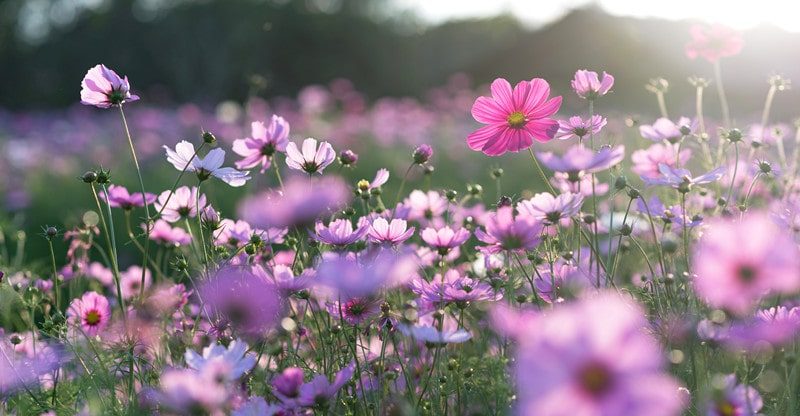Various Types of Flowers That Can Be Used for Different Events
Introduction
Flowers have been a part of our lives for as long as we can remember. They bring beauty, peace and joy to any occasion. Floral arrangements are used in weddings, funerals, birthdays and other special occasions. Floral arrangements can be created for any budget and still make an impact on the recipient’s day.
There are many different types of flowers that can be used to create stunning floral designs that will last long after the event is over. From classic roses to exotic orchids, there is something available for everyone’s taste and style. No matter what your occasion, incorporating some type of flower into your celebration is sure to bring cheer and delight to all who attend.
Definition of Floral
The definition of floral is the practice of designing or arranging flower arrangements or decorations for special occasions. Floral designs often involve using flowers as the main focus in an arrangement, but may also include other elements such as foliage, twigs, berries, and other natural materials.
Floral designs can be used to express emotion and create atmosphere during a wide variety of events, from weddings and funerals to garden parties and birthday celebrations. To learn more about flowers, visit this link: https://wellliveflorist.com.
Floral design has been used throughout history to express feelings between people through beautiful arrangements. In many cultures around the world, flowers have held symbolic meaning that conveys thoughts and feelings that words cannot always express. From ancient Greek mythologies to modern-day floral bouquets, flowers have been used as a way to show affection for centuries.
Today there are many different styles of floral design depending on the occasion or event being planned. For example, a wedding may require more formal arrangements with white roses while a garden party may feature bright colours like yellow daisies or purple hydrangeas in wildflower centrepieces. Similarly, for funerals, there is usually more sombre tones such as white lilies or chrysanthemums arranged simply in vases or baskets suitable for mourning ceremonies.
History of Floral Design
The history of floral design dates back centuries, with the earliest recorded evidence of floristry being found in ancient Egyptian tombs. It is believed that the Egyptians used flowers to decorate their homes and as offerings to the gods. In ancient Greece, the floral design was used extensively in religious ceremonies and festivals, with wreaths made from various plants being a popular choice for decorative purposes.
In Medieval Europe, flowers were often seen as symbols of love or faith and were often given as gifts or worn for special occasions like weddings. During this time period, floristry also became an art form in itself with skilled artisans creating intricate arrangements from flowers and other plant materials. These arrangements could be highly detailed works of art that would last for months or years without any additional care needed.
In the 1600s flower arranging began to become popular amongst European royalty who would display large-scale displays at special events such as weddings or other important gatherings. This trend continued into the 1700s when flower arrangers began using more complex designs incorporating different colours and shapes into their creations.
The popularity of flower arranging spread to Japan during this time period where it became an integral part of Japanese culture known as Ikebana which continues today in modern Japan.
Types of Flowers Used in Floral Design
When creating a beautiful floral arrangement, there are many types of flowers to choose from. From roses to lilies and tulips to carnations, each type of flower has its own unique look and texture that make it an ideal choice for any design. Here is a guide to some of the most popular types of flowers used in floral design.
Roses: Roses are one of the most popular flowers for floral arrangements. With their large size and vibrant colours, roses can be used as the main focus or in combination with other types of flowers. Roses come in a variety of colours, shapes, and sizes which makes them versatile enough to be used in any type of design. For example, pink o’hara rose is a popular variety known for its delicate beauty and delightful fragrance.
Lilies: Lilies are often seen as luxurious and exotic flowers due to their large blooms and long stems. Of all the lily varieties available for use in floral designs, stargazer lilies have become particularly popular due to their bright pink colouration with dark spots on each petal that resemble starbursts or stars when they open up fully during bloom season.
Tulips: Tulips come in a wide range of colours making them perfect for adding beauty and diversity to your flower arrangements. They also feature cup-shaped blooms that can create interesting visuals.
Popular Arrangement Styles
The art of arranging flowers is a skill that has been around for centuries. It has evolved over the years, with different styles becoming popular in different countries and at different times. From traditional to modern, there are many popular flower arrangement styles that are used today.
Traditional arrangements often feature classic elements such as symmetrical lines and shapes, along with classic flower varieties such as roses and carnations. These arrangements tend to be more formal in style, making them perfect for special occasions like weddings or important business events. In addition to the choice of flowers, traditional arrangements also incorporate greenery and foliage for texture and added colour.
Contemporary arrangements take on a more modern look by focusing on structural elements such as asymmetrical lines or patterns instead of symmetry. The use of bold colours is also very common in contemporary designs with unique combinations creating an eye-catching display. Unusual materials like feathers can also be incorporated into contemporary designs as an interesting contrast to the delicate petals of flowers.
Benefits of Fresh Flowers and Plants
When it comes to sprucing up your home, there’s nothing quite like the beauty and freshness of having fresh flowers and plants around. Not only do these natural elements add color, texture, and life to any space, but they also offer a wide range of benefits that can help enhance mental and physical well-being.
One of the biggest advantages of having fresh flowers and plants in your home is that they can act as natural air purifiers. Many indoor plants are known for their ability to absorb toxins from the air such as formaldehyde or benzene, which are common pollutants found in many households. This can help improve air quality indoors significantly by providing fresher oxygen for you to breathe.
Furthermore, some studies have even found that certain airborne bacteria are eliminated when exposed to certain types of greenery such as spider plants or aloe vera.
Having fresh flowers or plants around the house can also provide psychological benefits by reducing stress levels. Studies show that spending time with nature has a calming effect on people—even if it’s just looking at a pot plant from afar—and this is especially true when surrounded by pretty blooms like roses or lilies.
Tips for Creating Long-Lasting Arrangements
Creating long-lasting floral arrangements can be a challenge, but with a few simple tips, you can have beautiful and vibrant arrangements that will last for weeks. Here are some tips to help you create long-lasting arrangements:
- Choose the Right Flowers – Not all flowers are created equal when it comes to creating lasting displays. Select varieties that have been bred for their longevity, such as roses, chrysanthemums, carnations and gerbera daisies. These types of flowers tend to hold up longer in an arrangement than other varieties and will give you more time to enjoy them before having to replace them.
- Use Proper Hydration Techniques – Proper hydration is essential for keeping your flowers fresh longer. Make sure to cut the stems at an angle and add fresh water each day with flower food or preservative solution included in most flower care kits available at local florists or craft stores. Be sure not to overcrowd stems in your vase; instead, allow plenty of space between blooms so they don’t compete for water absorption.
- Keep Them Cool – Heat is the enemy when keeping your floral arrangements looking beautiful for longer periods of time; try keeping them away from direct sunlight or warm air vents.
Conclusion
In conclusion, floral is an incredibly diverse and versatile design element that can be used to create a classic or modern look. It can be used in a variety of ways, from decorating your home to accessorizing your wardrobe. Floral designs are timeless and will never go out of style. Whether you use them as the main focus or as an accent, they can bring life and colour to any space.



